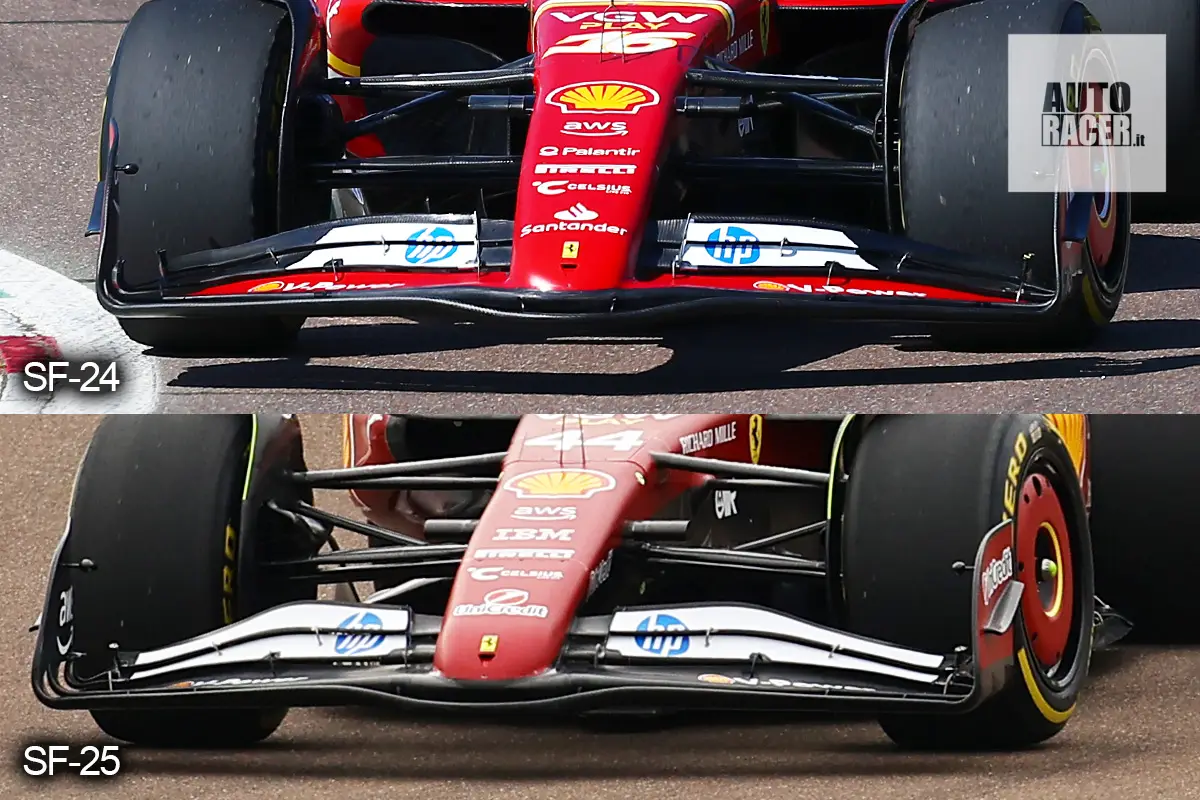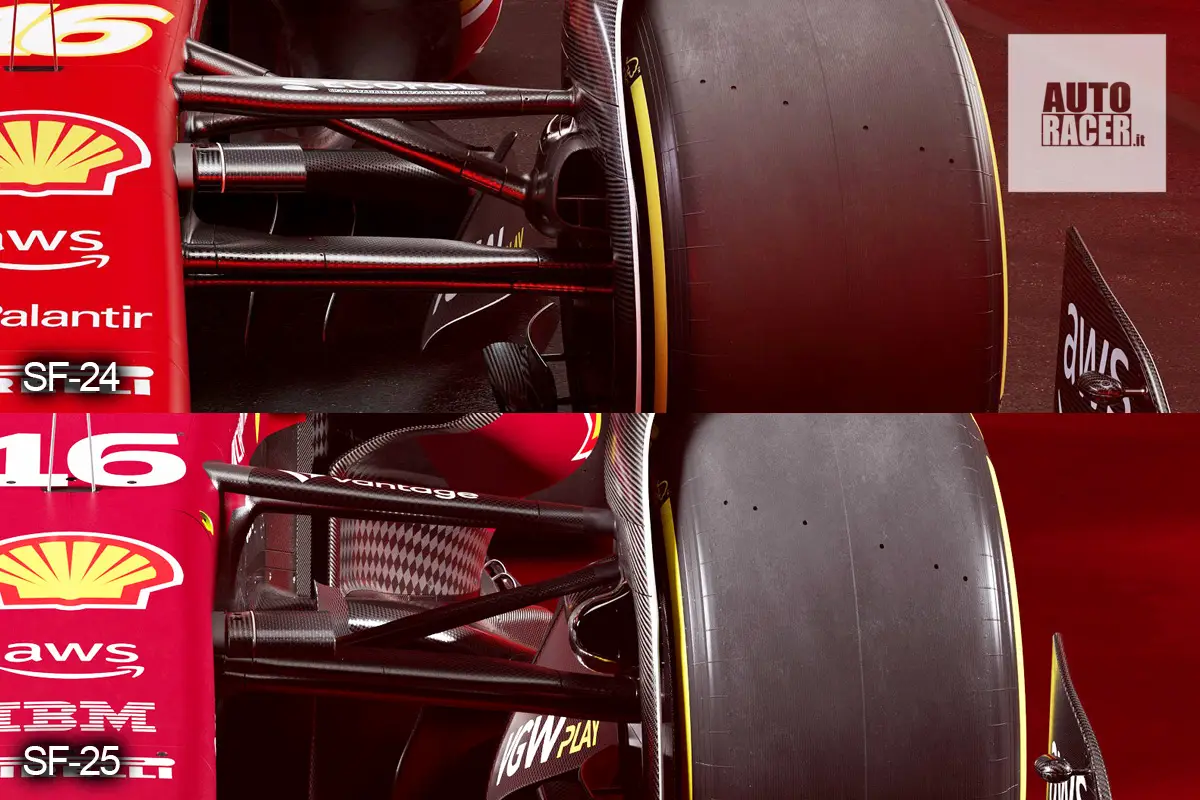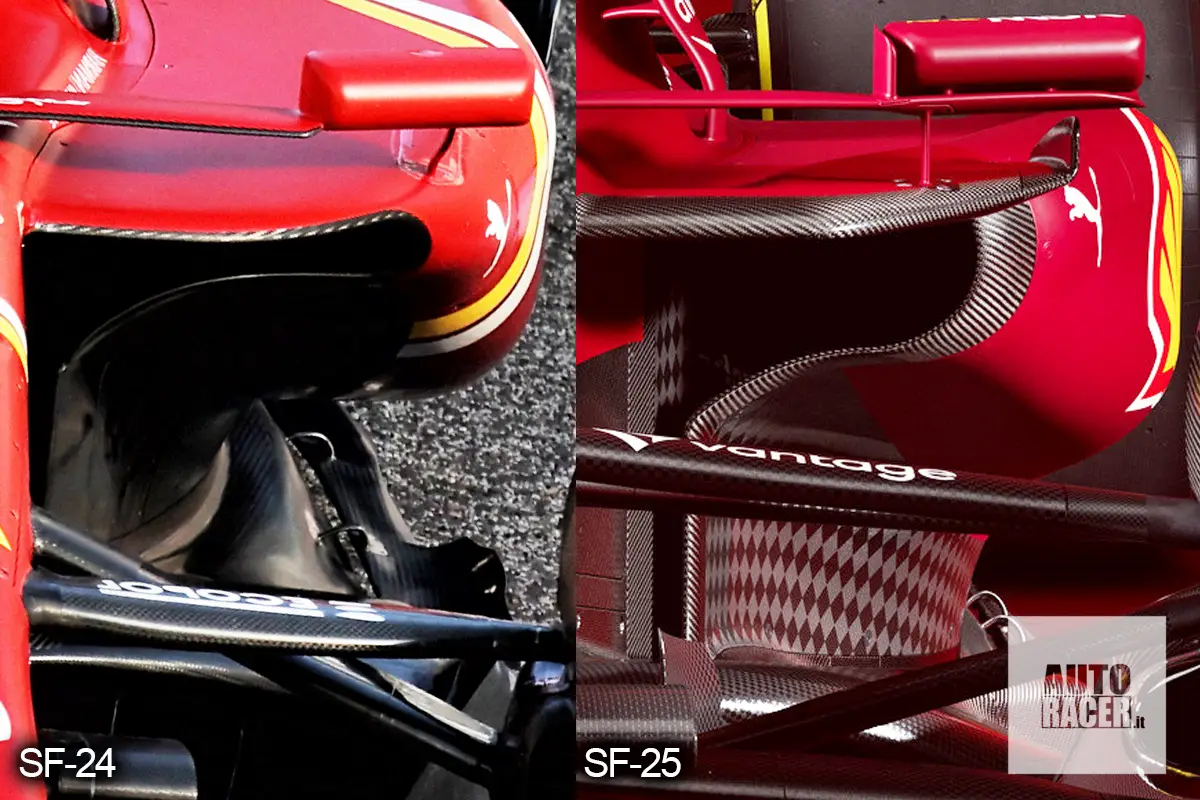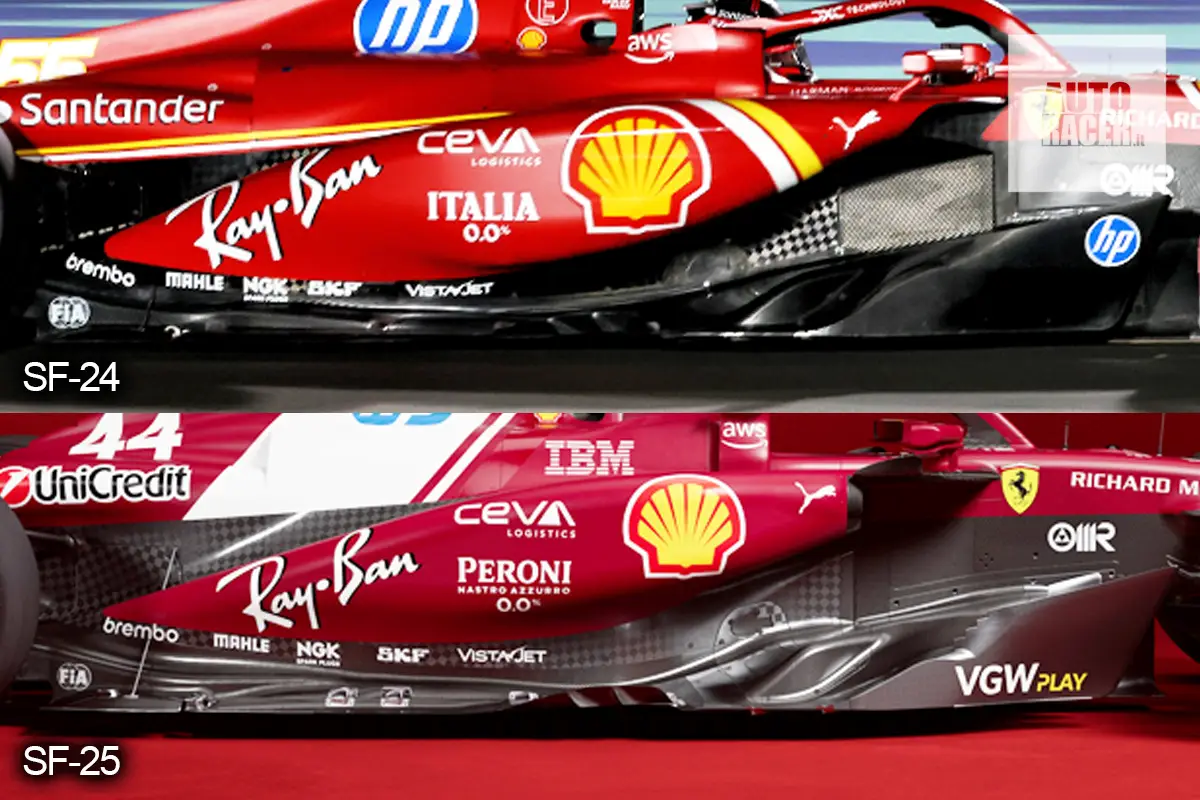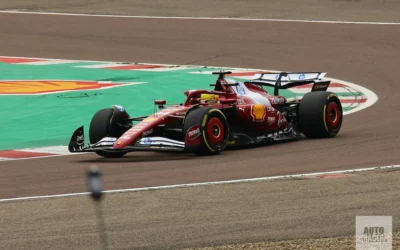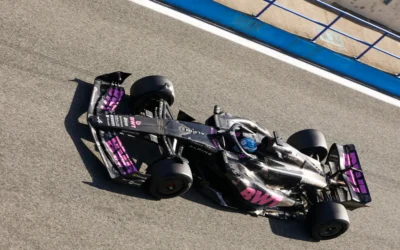While a repainted SF-24 with the updated livery was shown in London, Ferrari launched their official 2025 renders online. The SF-25’s official debut then came the next day, February 19 where Charles Leclerc and Lewis Hamilton split the 200 km of running on filming day.
Ferrari’s single-seater has now been shipped to Bahrain, for the three days of critical pre-season testing (February 26-28th).
Switch to pull-rod front suspension to increase new development avenues
One of the expected changes on the SF-25, which most changed the foundations of the Prancing Horse project, was undoubtedly the switch to a pull rod front suspension.
This choice now in line with what most teams have adopted since 2022. However, this adjustments come at Ferrari in the last year of the regulatory cycle. The Scuderia’s new technical director, Loic Serra, explains this choice was mainly dictated by aerodynamic reasons – to offering greater margin for development.
The Maranello engineers went in search of a way to optimise airflow to the floor, with a tie rod that allows an “in-wash” of airflow towards the sidepods – unlike the push-rod strut.
Ferrari’s suspension has been totally changed. Not only in terms of layout, but regarding arm geometry, with the SF-25 featuring an upper triangle to show a smaller difference in height for anti-dive.
This configuration is apparently less extreme, but better rewards the stability of the single-seater when braking. This is an area where both Leclerc and Hamilton are very sensitive.
The design of the upper triangle features a more rearward position in the attachment to the chassis, completely redesigned for the SF-25, while the attachment point to the wheel corner has been raised.
These choices were influenced a slight forward shift of the front axle with a lengthening of the wheelbase. All these changes are aimed at creating a cleaner passage of airflow towards the floor.
In terms of front wing design, there are many similarities to the Singapore 2024 spec, which was revised with more elastic materials in Austin. The nose has been slightly revised in the attachment area to the second element of the wing, without changing the philosophy of last year.
Slightly elongated wheelbase and set-back sidepods: A refined philosophy without past limitations
The SF-25 is more different from the old single-seater than the visual approach alone can suggest: “The front suspension is the most visible change. But there are equally important changes that are less obvious.”
This is how Loic Serra described the first red car under his technical guidance. Changes to the attachment of the front suspension and the wishbone to the chassis have been implemented.
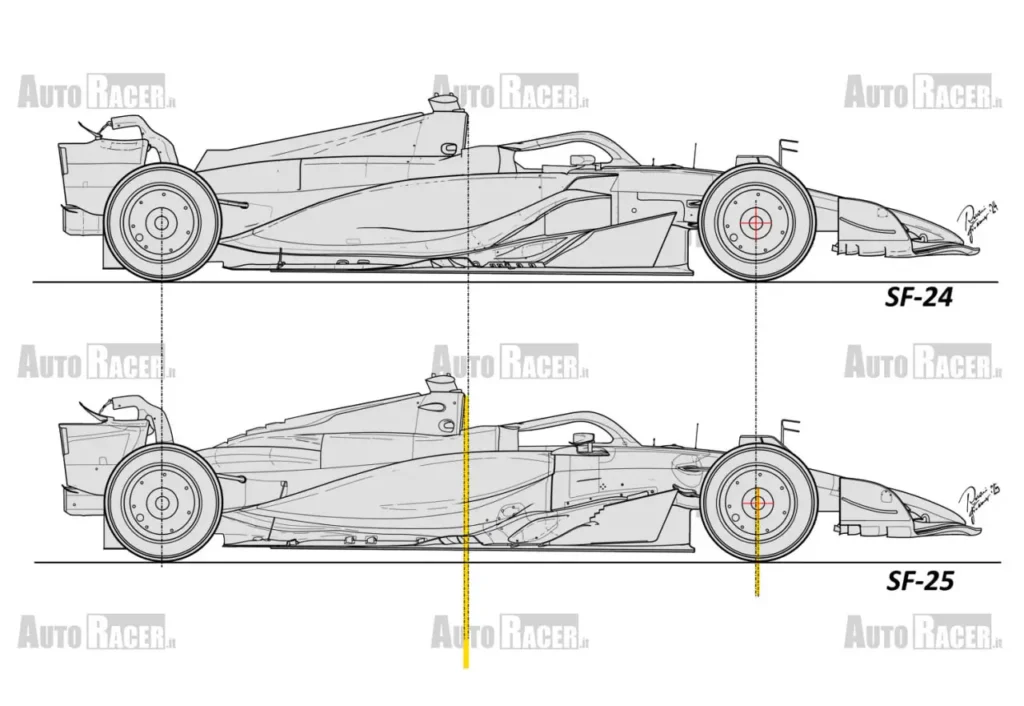
Diego Tondi’s technician’s have pushed to lengthen the wheelbase of the SF-25, moving the front wheels away from the entrance of the sidepods. The sidepods now have a double inlet mouth connected in the shape of a “P”, and the entire undercut area has been revisited.
All changes are aimed at reducing harmful turbulence in the floor and the venturi inlets. At the same time, the cockpit has been moved back slightly, with a consequent slight change to the weight distribution.
In combination with the other changes, it should create a more stable rear end.
The work of the winter has seen the technicians of Maranello focused on seeking a car that has a more “powerful” front end, an aspect that is appreciated by Leclerc’s driving style.
At Fiorano we saw a car that is precise at the front, with a consequent slightly more “lightened” rear.
The radiator vents remain faithful to the ‘overbite’ philosophy. However, the team’s change in shape to the upper wing is McLaren-style, featuring more elongation and curl.
While the sidepods are more tapered in the lower part, Ferrari has also recreated an upper excavation. This is where the ‘slide’ is present, taking inspiration from the “fish tank” solution of the F1-75, although not in such an extreme way.
The sidepod edge gradually increases, creating a recess where the air will be channelled and directed towards the rear. Ferrari’s engine cover now has a cleaner design, with a tray that extends from the shoulders of the cockpit to the rear area.
This is where the opening remains – a solution also taken up by McLaren on the MCL39 – serving to redirect airflow. The famous ‘fin’ of the bonnet has almost completely disappeared, while small openings have appeared – a solution first implemented by Alpine.
Confirmed, as anticipated, the triangular air box and then an absolute cleanliness of the upper part of the bonnet, where the ‘Cobra’ has remained – with the addition of a horizontal support for anchoring it to the frame.
The Ferrari SF-25 floor starts from the experimental base of late 2024, evolved in the structure and venturi channels.
Ferrari’s floor, although revised, largely incorporates the changes Ferrari experimented with in Las Vegas. These adjustments produced better data than initially anticipated.
TheSF-25’s floor has undergone more work in the area the venturi channels. There is now a new structure and a different centre of gravity.
Changes to the floor inlet are most significant, including the external fin that features a new stepped design in the upper area. There is also a different cover that wraps around the anti-intrusion cone.

The rear pull-rod suspension has been updated. Brand new medium downforce rear wing
Ferrari remains the only manufacturer with a pull-rod rear suspension, albeit with a significantly updated layout. In Maranello, they continued to trust, so to speak, their rear suspension design.
This choice, unlike the front suspension, represents an area of continuity. From the perspective of Ferrari’s engineers, there is no obvious advantage to justify a change the front suspension.
Making adjustments to the upper part of the push-rod should give designers more freedom. The rear mechanics have been a point of technical solidity for the Maranello outfit in recent years.
Ferrari’s cars have always enjoyed good traction and excellent performance on stop-and-go circuits.
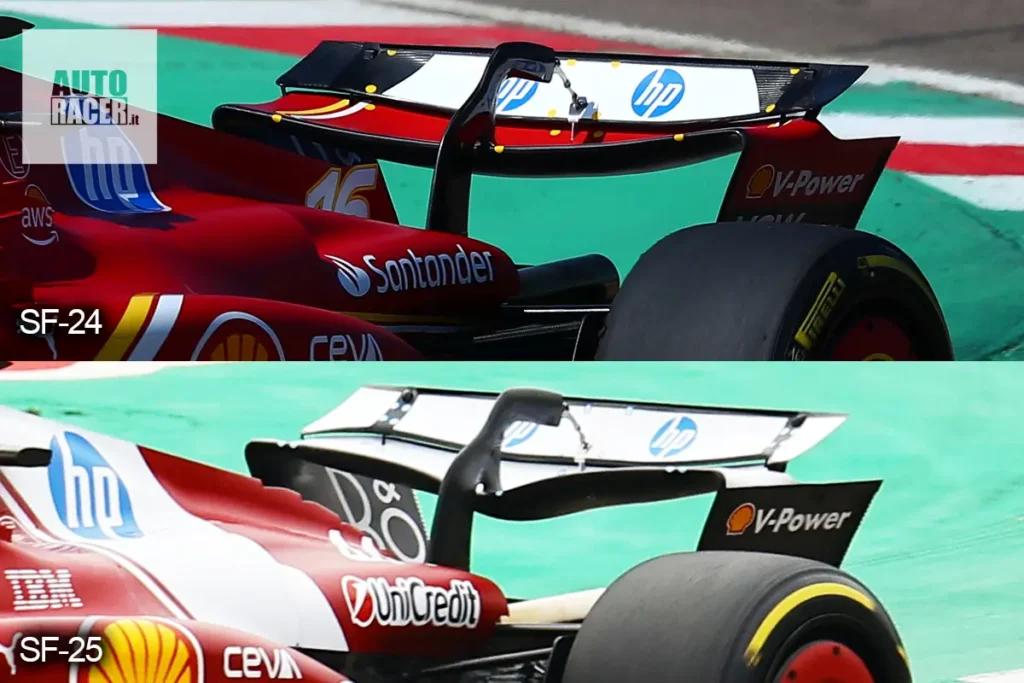
At Fiorano, the new rear wing was seen on the Ferrari SF-25, with a key difference compared to last season.
It features a medium-high downforce specification, with a pronounced “V” in the main plane. This takes inspiration from the Alpine philosophy, which was then adopted by McLaren.
Then again, elements of this configuration were already present in the F1-75.


